Things she left behind
I wrote the story of my glamorous and tragic grandmother, Aurelia, early and later life that showcased her precious and fragile photos that made it possible to retrace important events in her short life. I am sure many other events are lost for ever.
In addition, to the photos, there are a few things that she left behind that I think are interesting for what it says about her, the world and the times she lived in.
First there are a few folk costume pieces. From the photos I know that she often posed in folk costumes as a child and indeed I have one such photo of her in the “ia” I have. I have only one photo of her as an adult in folk costumes. She clearly had a good collection of folk costumes, of which I only have a few pieces and I love the fact she was equally naturally with folk, urban, professional or glamorous clothes.
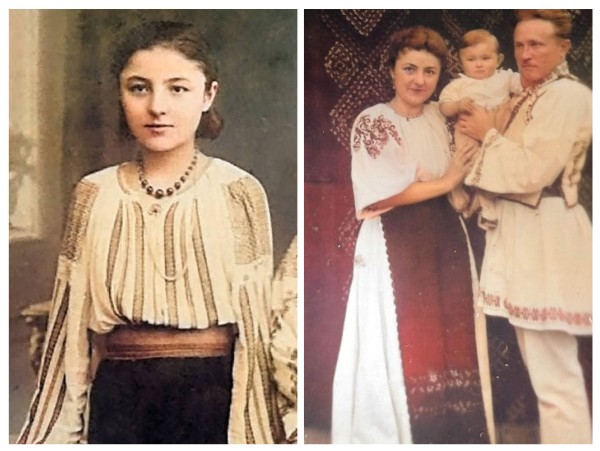


</figure>
I also have three paintings she made: two similar night village scenes and some flowers. I don’t know when she painted these: at school, in Bucharest, back in the countryside? The village scenes are quite typical with the old fashioned wells. A Google image search revealed nothing, so they might not be copies of other images but original. I am happy to claim in common with her my interest in art (..art) and a desire to produce visual arts of images from one's head.
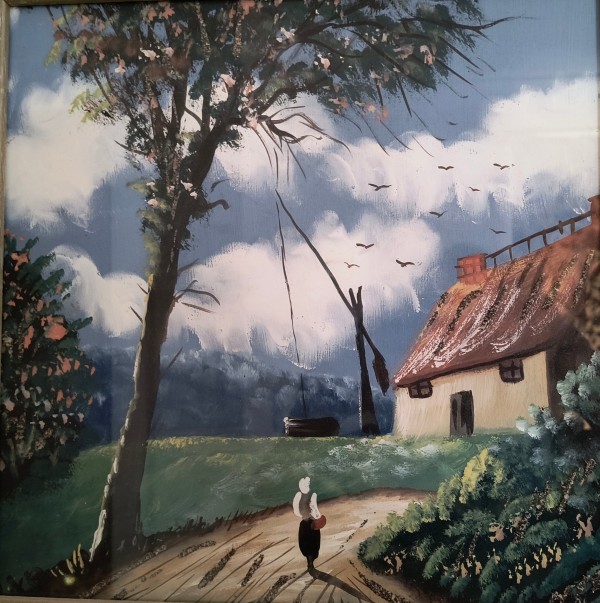
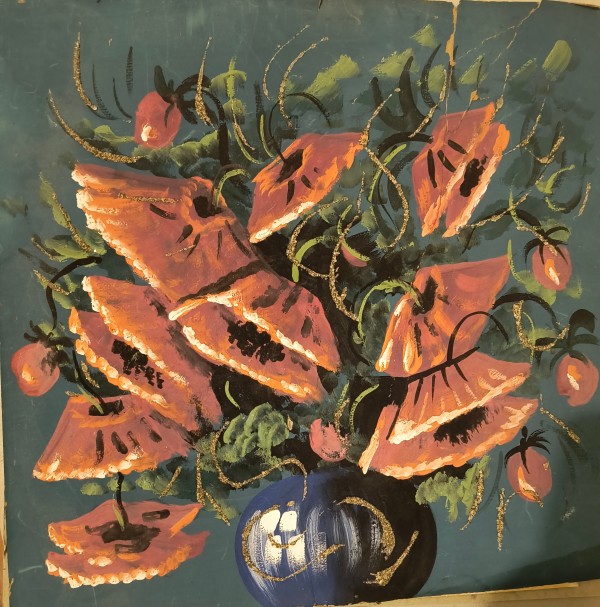
There are a couple of things of interest in this document. Both buyer and seller are women, no supervising male in sight. The document says it was written with Latin characters. This was very surprising for me. I knew Romania used Cyrillic alphabet until 1860 and that something called Romanian Slavonic was used in church but it feels strange that as late as 1939 it was not obvious what alphabet a document was written such they needed to specify it. It seems to suggest there were still documents in administration that used non-Latin characters. Strangley, it also says the original was written on paper. As opposed to what? Vellum, papyrus?
The personal significance of this document is huge. I know from my mother the effort behind this purchase. Constance, Aurelia’s mother sold her “salba”, golden coin necklace, part of her own dowry, to help her daughter establish her life in Bucharest. Had Constance kept it, the only question would have been who got it first: the Soviet soldiers or the Romanian communists. This was the fate of all Constance's other valuables.
It doesn’t bare thinking about how different the life would be for all Aurelia’s descendants without this piece of land. We all benefitted enormously from it. For example, while I studied abroad in different countries on scholarships, grants or through working, getting there, surviving until the grants came, deposits, costs of moves, and many other things were possible through this piece of land. I wish Constance and Aurelia knew how this one decision impacted hugely so many in the family for many years to come and that there were five generations of our family, at one point or another, on that piece of land. My heart is full of gratitude.
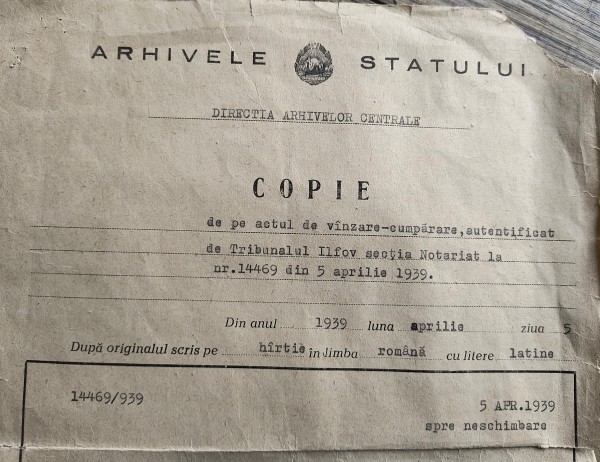
The last item is a bit surprising: an auto map from 1938 and describes what is referred as the Great Romania, the borders of the country after World War I, when various Romanian lands occupied by neighbouring empires, Russian and Austro-Hungarian got their chance to reunite with the kingdom of Romania.

The auto part is surprising because Aurelia did not drive a car though I heard from other relatives that this was something she wanted to do. I think this was a bit like people buying a toy Ferrari with the hope that one day they would own the real thing. I know from the photos that she travelled to and from her village and Bucharest and this is not the easiest trip even today. Meanwhile, the number of cars in Bucharest was increasing constantly so it is easy to imagine her dreaming of an easier trip. I concluded from various evidence in previous posts that she was quite a pioneer in many ways, so it wouldn't be hard to imagine her aspiring to drive as well.
Obviously, changes to countries borders are not unheard of, but this is the map of the country that I hardly recognise. The shape is different, it includes Republic of Moldova and parts of Ukraine and Bulgaria. The division is different. Instead of the current 40 counties that were introduced by the communists, there are the historical regions, the Romanian statelets that existed before the national state: Moldova, Walachia (Muntenia), Banat, Oltenia, Crisana, Maramures, Bucovina, Basarabia, Dobrogea. Also different are the emblems of the main cities, full of regal symbols. I am not sure I have seen the year quite so preeminent on a map. At the time, there were less than 20 years when the country looked this way. Maybe that was another explanation of having the map even without the car. Aurelia's dad, along with countless others, paid the ultimate price to make the country look this way, so maybe it was a form of homage as well.
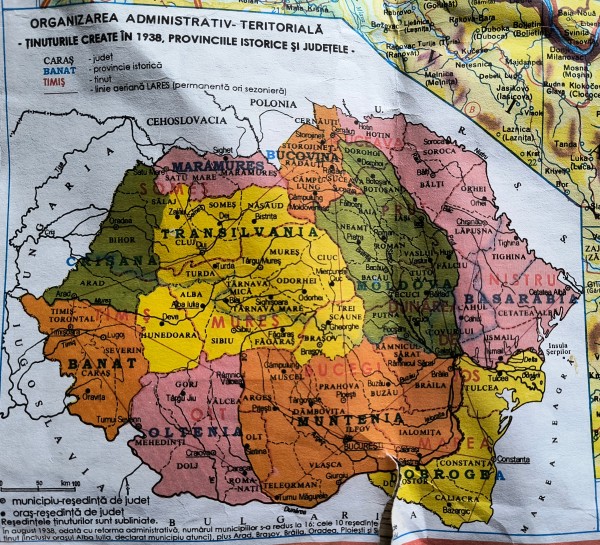
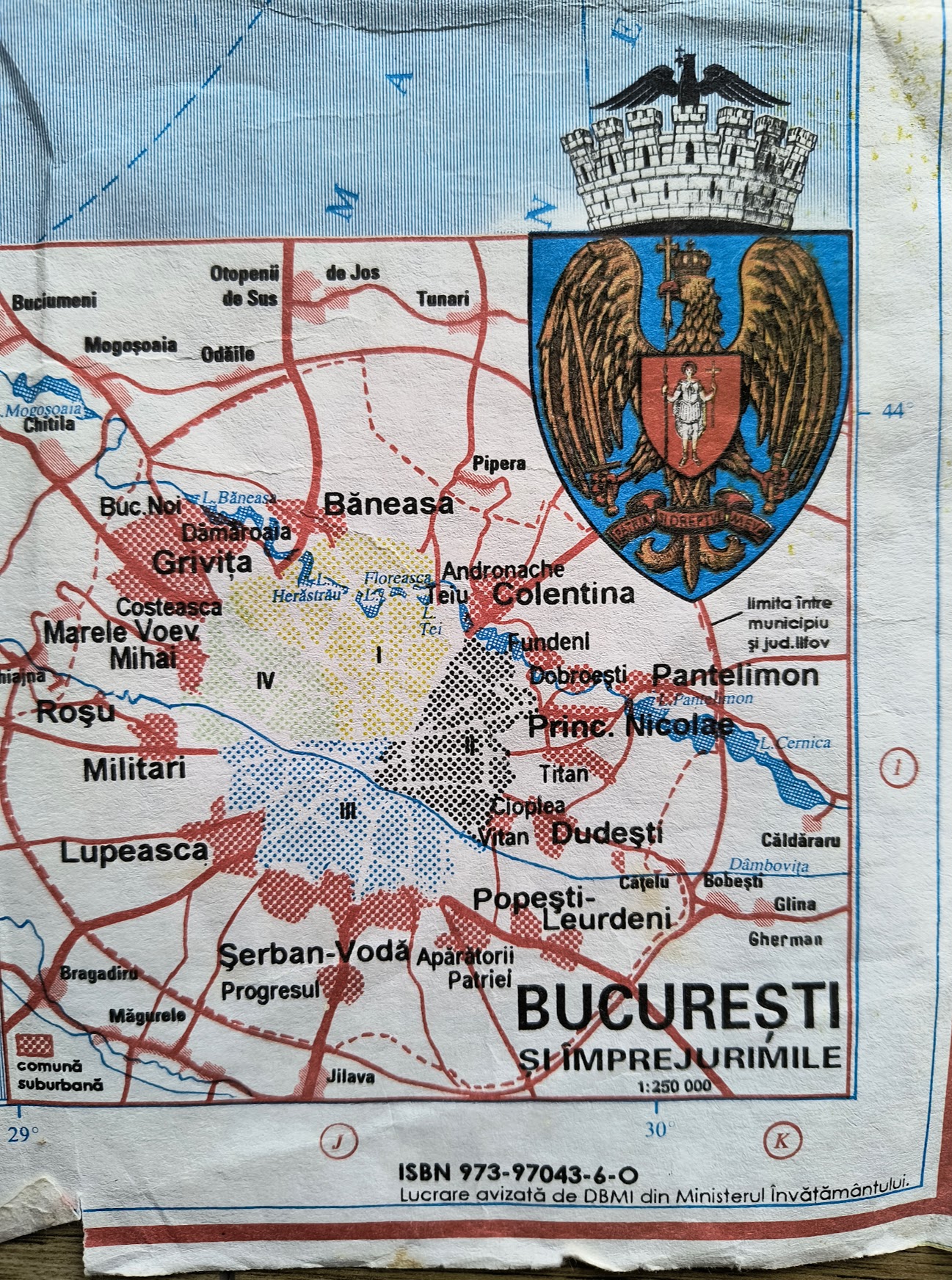
I cherish these objects, even those that are utilitarian rather than beautiful on their own. The map, the property document, folk costumes, paintings speak to me in a deep and affecting way, of the past, lost dreams and aspirations, how decisions we make can affect our families many years after we are gone, how things change and what we leave behind.